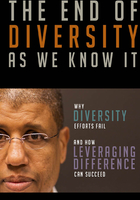
Retaining a Diverse Workforce Is Tough
Hiring is only part of the headache that leaders face as they attempt to build more diverse organizations. Attrition statistics show that there is still that all-too-familiar revolving door for many women and people of color: they are hired but leave more quickly than their white male peers. Losing any employee is costly, but losing employees who contribute to diversity goals takes a huge toll on companies that are trying to build and sustain a diverse workforce. Often they have made extra investments to attract these individuals—investments that are lost when people leave prematurely. And retention rates are generally lower for women and people of color relative to white and male employees. Moreover, annual voluntary turnover is nearly 30 percent higher among people of color.
Moreover, annual voluntary turnover is nearly 30 percent higher among people of color.
The causes are varied. In a large study of black, Hispanic, and Native American managers, the subjects reported that their willingness to remain in a company was influenced by several important factors. First they looked for access to developmental opportunities that would prepare them to advance in the organization. This is a common finding: people want a chance to learn, grow, and be rewarded for their efforts. In addition, these managers sought timely and accurate performance feedback. Supervisors are sometimes reluctant—especially in U.S. organizations—to provide concise negative feedback to employees of color. They fear that a bias complaint may be lodged against them and that such a complaint, valid or not, could damage their reputation and their career. As a result, managers of color often are deprived of the information they need to improve. They are blindsided when they finally do get feedback, because often by that point the problem has gotten worse. Managers in the study reported that access to real-time feedback was critical. They also said that a firm’s active commitment to diversity was a positive motivation for staying. At the same time, they were watchful of how the firm managed perceptions of bias or discrimination. When it was proactive, they were much more likely to stay in the organization.
Adding to the challenges of maintaining a diverse workforce is the fact that when women or people of color join work groups, white men who are in those groups become flight risks. One set of studies examined organizational attachment—how much a person feels committed to staying at an organization—in diverse working groups. The researchers discovered that having women and people of color join predominantly white male workgroups lowered the attachment levels for the white men in those groups. That lower level of attachment translated into a greater likelihood of leaving the organization. This suggests that the retention dilemma is multifaceted: people who typically increase diversity are at risk to leave at a greater rate than their white male counterparts, but if they stay, the white men are more likely to leave. When all is said and done, these dynamics can make it difficult to maintain a diverse workforce.
This suggests that the retention dilemma is multifaceted: people who typically increase diversity are at risk to leave at a greater rate than their white male counterparts, but if they stay, the white men are more likely to leave. When all is said and done, these dynamics can make it difficult to maintain a diverse workforce.